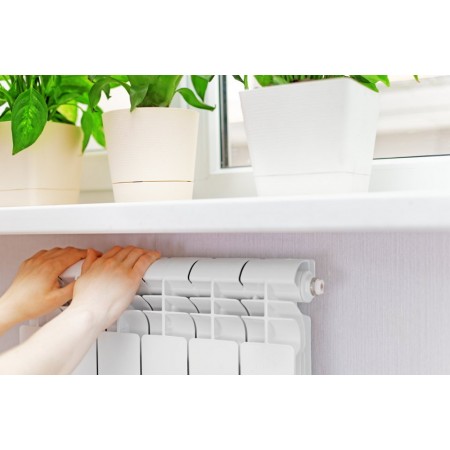Rules for the protection of indoor flowers from dry air

Each grower knows that most indoor plants need a certain care, contributing to their growth and reproduction. Too dry air almost always has a detrimental effect on any vibrant flowers, and in this material we will tell you what steps will help you protect indoor plants during the heating season.
How to protect flowers from dried air: a few important rules
One of the most simple rules that ensure the life expectancy of flowers in winter is choosing the right place in the house. The window sills located above the batteries and radiators are not very suitable for placing flowerpots, so it is recommended to remove flowers from it as far as possible for the duration of the heating equipment. In addition, the window sill material itself is cooled from above and heated from below, and the sudden temperature changes from this also adversely affect your pets.
The next important point is the correct spraying of flowers. In the summer they need an abundance of moisture, but in winter they should be moistened with stems, leaves and buds with a certain regularity. As a rule, it is necessary to introduce moisture into the soil as soon as the top layer of the earthen clod dries up, but this rule should not be abused - stagnation of moisture in the soil can also lead to various problems.
For irrigation and spraying, it is necessary to use only warm water warmed to room temperature. It is also recommended to defend the liquid before use, as the water entering our homes from taps contains iron impurities, the presence of which causes diseases and the rapid death of flowers.
What flowers are not too sensitive to humidity
There are varieties of plants that are unnecessarily dependent on the level of humidity in the rooms. These include: rose, lemon, fern, begonia, cyclamen, dracaena, ficus, monstera. They need to be constantly watered or installed near the flowerpots of additional containers with liquid - so the flowers will be able to independently absorb the right amount of moisture from the air.
However, in nature there are plants that are not too dependent on air humidity, and for some of them the window sills above the batteries are optimally suited. Geranium, pelagonia and succulents can not be transferred to other places, even in winter, when the heating equipment is operating at full capacity. For epiphylum, eucalyptus, tradescantia, and saintpaulia, it is best to first place the trays of water next to them. They will not die from dry air, but they will not be able to grow actively without additional sources of moisture.
As an additional means of controlling the level of humidity (if you can not independently regulate the heating of the air in the house), you can use special electric humidifiers that release water vapor when the liquid is heated. They are placed near the flowerpots - this ensures that even the most whimsical flower in the room will survive during the heating season.